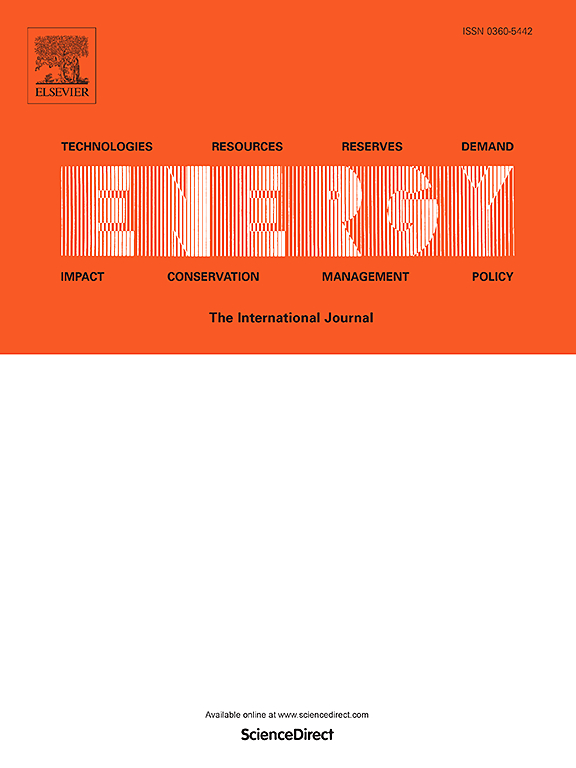NiMo改性HZSM-5/MCM-41复合分子筛在微波流化床催化共热解木质素水解产物和废轮胎制备单环芳烃
IF 9
1区 工程技术
Q1 ENERGY & FUELS
引用次数: 0
摘要
高氧含量不利于水解木质素热转化为液体燃料的脱氧过程。研究了负载在分子筛上的镍和钼以及温度对木质素水解产物和废轮胎在微波流化床催化共热解制单环芳烃的影响。结果表明,废轮胎产生的烃类自由基淬灭了木质素水解产生的氧自由基,改善了共热解产物的分布,减轻了催化剂的焦化。与复合分子筛载体相比,在双金属共载催化剂的作用下,在550℃、Ni:Mo比为2:1的条件下,理想的生物油收率达到42.64 wt%, MAHs的选择性为46.15%。微波流化床催化共热解是将木质素水解产物、废轮胎等有机固体废弃物转化为高价值产品(包括单芳烃)的有效途径。本文章由计算机程序翻译,如有差异,请以英文原文为准。
Catalytic co-pyrolysis of hydrolyzed lignin and waste tires over NiMo modified HZSM-5/MCM-41 composite molecular sieve in microwave fluidized bed for monocyclic aromatic hydrocarbons
High oxygen content is unfavorable for the deoxygenation process during the thermal conversion of hydrolyzed lignin into liquid fuel. This study investigated the effects of nickel and molybdenum supported on molecular sieves, as well as temperature, on the catalytic co-pyrolysis of hydrolyzed lignin and waste tires in a microwave fluidized bed for the production of monocyclic aromatics. Results indicated that the hydrocarbon radicals generated by the added waste tires quenched the oxygen radicals from hydrolyzed lignin, improved the distribution of co-pyrolysis products and mitigated the coking of the catalyst. Compared to the composite molecular sieve carrier, under the action of the bimetallic co-loaded catalyst, at 550 °C and with a Ni:Mo ratio of 2:1, the ideal bio-oil yield reached the highest of 42.64 wt%, and the selectivity of MAHs is 46.15 %. The microwave fluidized bed catalytic co-pyrolysis process provides an efficient approach for converting organic solid wastes, such as hydrolyzed lignin and waste tires, into high-value products, including monoaromatic hydrocarbons.
求助全文
通过发布文献求助,成功后即可免费获取论文全文。
去求助
来源期刊

Energy
工程技术-能源与燃料
CiteScore
15.30
自引率
14.40%
发文量
0
审稿时长
14.2 weeks
期刊介绍:
Energy is a multidisciplinary, international journal that publishes research and analysis in the field of energy engineering. Our aim is to become a leading peer-reviewed platform and a trusted source of information for energy-related topics.
The journal covers a range of areas including mechanical engineering, thermal sciences, and energy analysis. We are particularly interested in research on energy modelling, prediction, integrated energy systems, planning, and management.
Additionally, we welcome papers on energy conservation, efficiency, biomass and bioenergy, renewable energy, electricity supply and demand, energy storage, buildings, and economic and policy issues. These topics should align with our broader multidisciplinary focus.
 求助内容:
求助内容: 应助结果提醒方式:
应助结果提醒方式:


